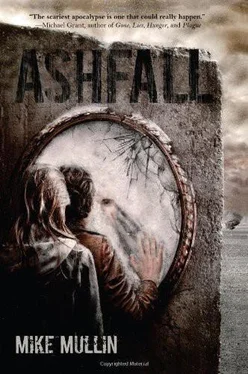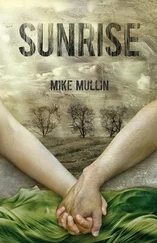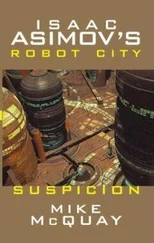The loudest sound in recorded history was probably Krakatoa’s eruption on August 27, 1883 in Indonesia. That eruption was audible almost 3,000 miles away on the island of Diego Garcia in the Indian Ocean. There, it sounded like the roar of heavy artillery for several hours. Yet the Yellowstone supereruption 2.1 million years ago was about 120 times more forceful than Krakatoa’s blast.
The ashfall I’ve depicted in the book is similar to what Yellowstone released 2.1 million years ago. This amount of ash would have darkened the skies for months, possibly years, and caused a global volcanic winter lasting a minimum of three years. Ash particles are tiny and electrically charged, so they are often associated with lightning storms. They can also cause odd weather effects, usually abnormally heavy precipitation in the short term, followed by years of drought.
No one knows exactly how much warning we’d get before an eruption at Yellowstone. It’s possible it could happen suddenly, but more likely there would be years of earthquakes and topographical changes to warn us. Whether we’d prepare adequately, even if given enough warning, is another question, of course.
If you’d like to read more about the science behind Ashfall, the following books are a good start:
Supervolcano: The Ticking Time Bomb Beneath Yellowstone National Park by Greg Breining. MBI Publishing, 2007. Provides an excellent overview of the history and geology of Yellowstone. Includes an account of major volcanic events that have impacted humans and speculates about the possible consequences of a Yellowstone supereruption.
Supervolcano: The Catastrophic Event that Changed the Course of Human History by John Savino, Ph. D. and Marie D. Jones. Career Press, 2007. Contains information on supervolcanoes around the world, including Yellowstone (Wyoming), Long Valley (California), and Toba (Indonesia). Chapter 10 is an interesting fictional account of a future supereruption at the Long Valley volcano.
Krakatoa: The Day the World Exploded, August 27, 1883 by Simon Winchester. HarperCollins, 2003. An exhaustive and beautifully written account of the biggest modern Plinian eruption.
Catastrophe: An Investigation into the Origins of the Modern World by David Keys. Ballantine, 1999. Describes how a volcanic event in 535 A.C.E. changed civilizations across the globe. Very useful for considering the possible political, social, and epidemiological consequences of a supervolcano.












